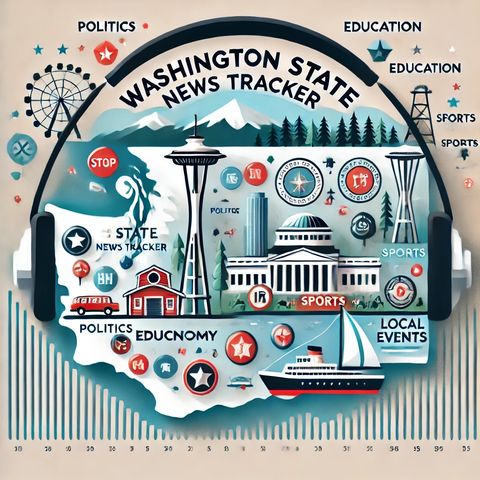Navigating Washington's Wildfire Threats: Adapting to a Changing Climate

Sign up for free
Listen to this episode and many more. Enjoy the best podcasts on Spreaker!
Download and listen anywhere
Download your favorite episodes and enjoy them, wherever you are! Sign up or log in now to access offline listening.
Navigating Washington's Wildfire Threats: Adapting to a Changing Climate
This is an automatically generated transcript. Please note that complete accuracy is not guaranteed.
Description
Washington state, located in the Pacific Northwest region of the United States, is characterized by diverse landscapes that include dense forests, mountain ranges, and a rugged coastline. These natural features,...
show moreWildfire season in Washington state is a significant concern due to the state's large expanses of forest land. The typical wildfire season extends from late spring through early fall when the weather conditions — a mix of warmer temperatures, low humidity, and summer winds —make the environment particularly prone to fires. However, changes in climate patterns have led to longer and more intense wildfire seasons, not only in Washington but across many Western states.
Recent years have seen some devastating wildfires in Washington. In 2020, the state experienced one of its worst wildfire seasons, with numerous homes destroyed and thousands of acres burned. The fire season was aggressively prolonged, influenced by unusually dry conditions and high temperatures.
Responding to the threat of wildfires, Washington has implemented a variety of strategies. Controlled burns and better forest management practices are part of the efforts to reduce wildfire risks. The state also heavily invests in community preparedness and in enhancing the capabilities of firefighting resources. Governor Jay Inslee has been active in addressing the broader challenge of climate change, recognizing its impact on increasing the frequency and severity of wildfires.
Moreover, public awareness campaigns are crucial in preventing wildfires. The state emphasizes the importance of responsible behavior in fire-prone areas, such as adhering to burn bans, safely discarding cigarettes, and following campfire safety rules. Community efforts and local government initiatives also focus on creating defensible spaces around properties in wildfire-prone areas and improving evacuation procedures to ensure public safety during emergencies.
Considering the evolving climate conditions, the question of whether the wildfire season is over in Washington state is becoming more complex. While traditional wildfire seasons may end, the risk of fires could extend beyond the usual period due to ongoing dry conditions and warm temperatures that persist into what would normally be the cooler months.
In conclusion, Washington state continues to face significant challenges due to wildfires, with state and local authorities, as well as residents, remaining vigilant and prepared year-round due to the unpredictable nature of these natural disasters exacerbated by climate change. The end of a traditional wildfire season does not necessarily denote the end of fire risks, pointing to a need for continued vigilance and adaptation to shifting environmental conditions.
Information
| Author | QP-4 |
| Organization | William Corbin |
| Website | - |
| Tags |
Copyright 2024 - Spreaker Inc. an iHeartMedia Company
